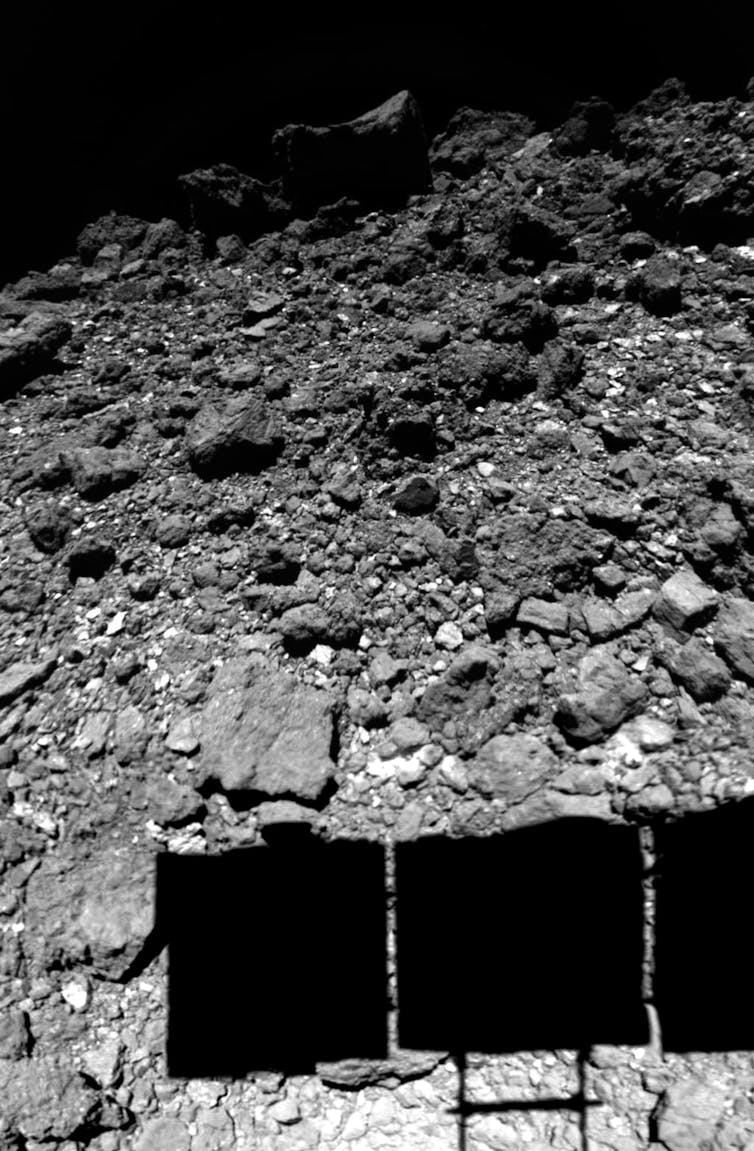A report on what the subtle colour differences of regions of Ryugu may tell us about its history
>…In a new paper published in Science, the Hayabusa2 team reports on their observations of the sampling process itself, and what measurements of Ryugu’s surface generally can tell us of its evolution. These observations paint a remarkable story of a cosmic traveler that traveled from the main asteroid belt, taking a short-lived excursion near the Sun, before ultimately settling into an orbit in our neighborhood as a near-Earth asteroid.

…The new paper describes how some parts of Ryugu are “bluer” and others are “redder.”
These terms relate to subtle variations in color of the asteroid surface across the visible spectrum. The Hayabusa2 team found that the equator and poles of the asteroid are bluer, whereas the midlatitudes are redder. Intriguingly, this color difference may be tied to age – or, rather, how long material is directly exposed to space. That’s because exposed surfaces are darkened and reddened by space weathering – bombardment by micrometeorites, solar and cosmic particles – and heating by the Sun, which is the primary mechanism for Ryugu.
…What I found most exciting was that, from the analysis of the size and colors of craters on Ryugu, the Hayabusa2 team concluded that at some point the asteroid must have been closer to the Sun that it is now. That would explain the amount of reddening of the surface. Using two different models for calculating the age of craters, the team estimated that this solar heating-induced reddening must have happened either eight million years ago or as recently as 300,000 years ago – a mere blink of an eye, cosmologically speaking.
(Full report at link above)